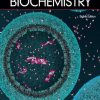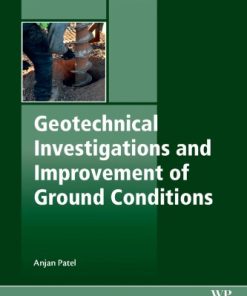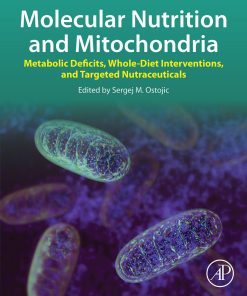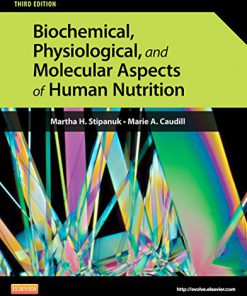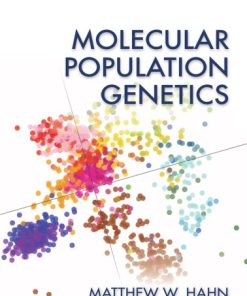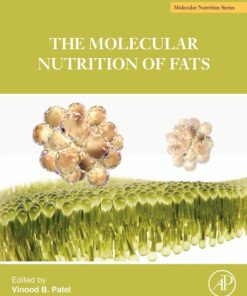(EBook PDF) Molecular Nutrition Carbohydrates 1st edition by Vinood Patel 0128498749 9780128498743 full chapters
$50.00 Original price was: $50.00.$25.00Current price is: $25.00.
Molecular Nutrition: Carbohydrates 1st edition by Vinood B. Patel – Ebook PDF Instant Download/DeliveryISBN: 0128498749, 9780128498743
Full dowload Molecular Nutrition: Carbohydrates 1st edition after payment.
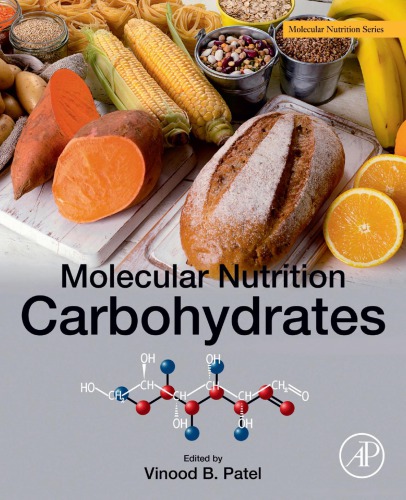
Product details:
ISBN-10 : 0128498749
ISBN-13 : 9780128498743
Author: Vinood B. Patel
Molecular Nutrition: Carbohydrates presents the nutritional and molecular aspects of carbohydrates. As part of the Molecular Nutrition includes sections covering carbohydrate metabolism, carbohydrates in the diet, insulin resistance, dietary sugars, cardiometabolic risk, lipoproteins, low-carbohydrate diets, antioxidants, refined dietary sugars, fats, glucose transporters, glucose sensing, the role of phosphorylation, carbohydrate responsive binding protein, cyclic AMP, peroxisome proliferator-activated receptors, SIRT1, insulinotropic polypeptide (GIP) and GIP receptor (GIPR) genes rRNA and transcription, and more. In addition, the book addresses emerging fields of molecular biology and presents important discoveries relating to diet and nutritional health.
Molecular Nutrition: Carbohydrates 1st Table of contents:
Part 1: General and introductory aspects
Chapter 1: Glucose homeostasis and the gastrointestinal tract
Abstract
Introduction
The phases of a meal
Dietary carbohydrate
Carbohydrate handling in the alimentary tract: A physiological walkthrough
Signals from the gut
The incretin effect and the incretin hormones
Harnessing the full potential of the gut
Chapter 2: Glucose transporters and their cellular form, role and function
Abstract
Introduction
Structure of SGLTs
Functional aspects of SGLTs
GLUTs: Facilitated diffusion glucose transporters (Fig. 3)
SWEET family of glucose transporters
Chapter 3: Molecular aspects and biochemical regulation of diabetes mellitus
Abstract
Introduction
Types of diabetes mellitus
The wonder molecule—Insulin
Biochemical regulation of diabetes mellitus
Diagnosis of diabetes mellitus
Type 1 diabetes mellitus
Type 2 diabetes mellitus
Conclusion
Chapter 4: Glycoprotein folding
Abstract
Introduction
The endoplasmic reticulum
N-glycan transfer
Glycoprotein folding quality control
The QC lectins
The glycoprotein folding sensor
Glycoprotein exit from the ER
Mannose trimming and degradation
Chapter 5: Potential link between sugar consumption and ectopic fat
Abstract
Acknowledgment
Introduction
Observational studies
Evidence from randomized controlled trials
Potential mechanisms
Future studies
Chapter 6: Contribution to molecular nutrition: Carbohydrates
Abstract
General features
Structural arrangements and properties
Classes of carbohydrates
Part 2: Molecular biology of the cell
Chapter 7: Peroxisome proliferator receptor gamma and the control of glucose metabolism: Insights from knockout mice
Abstract
PPARγ
Whole-body PPARγ deletion
PPARγ deletion in adipose tissue
PPARγ deletion in pancreas
PPARγ deletion in liver
PPARγ deletion in macrophages
PPARγ deletion in skeletal muscle
PPARγ deletion in brain
Final considerations
Chapter 8: Glucose metabolism in CD4 and CD8 T cells
Abstract
Acknowledgement
Introduction
The metabolic requirements for T cell activation and effector function
Fatty acid oxidation and oxidative phosphorylation in memory and regulatory T cells
Regulators of T cell metabolism
T cell metabolism in diseases
Immunotherapeutics
Conclusion
Chapter 9: Liquid fructose and liver insulin signaling: Molecular mechanisms controlling hepatic steatosis
Abstract
Introduction
Clinical studies on fructose consumption and hepatic insulin resistance
Clinical studies on fructose consumption and hepatic fat content
Molecular insight from experimental data
Key molecular players relaying fructose-related alterations in liver metabolism
Experimental design considerations
Concluding remarks
Chapter 10: Master role of glucose-6-phosphate in cell signaling and consequences of its deregulation in the liver and kidneys
Abstract
Acknowledgments
Maintenance of blood glucose
Glucose phosphorylation and dephosphorylation
Deregulation of glucose homeostasis in diabetes and glycogen storage disease type I
Chapter 11: Glucose transporter 1 and prognosis in cancer
Abstract
Introduction
GLUT1
The association between GLUT1 expression and prognosis in cancer
Regulators of GLUT1
GLUT1 expression and chemoradiation therapy
Inhibitors of GLUT1
Conclusions and future perspectives
Chapter 12: ChREBP and cancer
Abstract
Introduction
ChREBP, a glucose-activated transcription factor
Cancer and ChREBP
Antidiabetes and antilipid drugs show ChREBP inhibitor activities
Conclusion
Chapter 13: Metabolic syndrome: Protective potentials of dietary phenolic acids
Abstract
Introduction
Influence of phenolic acids on the components of metabolic syndrome
Chapter 14: Ischemia-reperfusion injury and the roles of excess fructose: Effects on the heart and other organs
Abstract
Acknowledgments
Conflict of Interest
Introduction
Roles of fructose in IRI
Conclusions
Chapter 15: Linking pathways and processes: Retinoic acid and glucose
Abstract
Introduction
Outline of vitamin A metabolism
TFs involved in carbohydrate metabolism
Crosstalk between retinoid- and glucose-dependent pathways to regulate gene expressions
Chapter 16: Sugars, sweet taste receptors, and brain responses
Abstract
Acknowledgments
Introduction
Chemosensory cells in the tongue
Taste receptors
Sweet taste signaling
Chemosensors in the gastrointestinal tract
Central regulation of food intake and energy balance
Brain regulation of glucose metabolism
Hypothalamic descending pathways
Central actions of gut hormones
Conclusions
Chapter 17: The role of d-galactose in the aging heart and brain
Abstract
Acknowledgements
Conflict of interests
Introduction
d-Galactose and the aging process
Role of d-galactose in cardiac aging
Role of d-galactose in brain aging
Interventions to improve the detriment in cardiac and brain aging induced by d-galactose
Conclusion
Chapter 18: Effects of dietary Salba (Salvia hispanica L.) on glucose metabolism in an experimental model of dyslipidemia and insulin resistance
Abstract
Introduction
Origin, composition, and usage of Salvia hispanica L.
Application to health promotion and disease prevention or improvement
Characterization of rats fed a long-term sucrose-rich diet
Effects of dietary Salvia hispanica L. (Salba) seed on the altered glucose metabolism and insulin resistance in skeletal muscle
Effect of dietary Salvia hispanica L. (Salba) seed on the metabolic fate of glucose and its interaction with lipid metabolism in the heart muscle of a dyslipemic-insulin resistant rat model
Effect of dietary Salvia hispanica L. (Salba) seed on glucose homeostasis in rats offspring exposed to a sucrose-rich diet from utero to adulthood
Chapter 19: Beneficial applications of glucosamine
Abstract
Introduction
Antioxidant mechanisms of glucosamine
Antiinflammatory and immunomodulatory activities of glucosamine
Modulation of transcription factors by glucosamine
Therapeutic uses of glucosamine
Conclusion
Part 3: Genetic machinery and its function
Chapter 20: Nutrigenomics and personalized nutrition for the prevention of hyperglycemia and type 2 diabetes mellitus
Abstract
Background
Genome-wide association studies identify multiple loci for type 2 diabetes
Large-scale association analyses provide insights into the pathophysiology of T2DM
Gene-macronutrient interactions in the development of T2DM and related phenotypes
Gut microbiota composition and diversity are associated with T2DM and related phenotypes
Prevotella plays a role in dietary fiber-induced improvement of glucose metabolism
Personal and gut microbiome feature accurately predict postprandial glycemic responses
Summary and perspectives
Chapter 21: Epigenetics and fructose metabolism: A new mechanism of fructose effects
Abstract
Fructose consumption
Fructose metabolism
Adverse effects of fructose
Epigenetics and fructose
The Developmental Origins of Health and Disease (DOHaD) hypothesis
DOHaD hypothesis from the perspective of maternal fructose consumption
Transgenerational effect of fructose
Concluding remarks
Chapter 22: Alterations of galactose metabolism caused by deficit of galactose-1-phosphate uridylyltransferase activity: An overview of galactosemia type I
Abstract
Acknowledgment
Galactosemia type I
Metabolic pathway
Pathogenesis of galactosemia
GALT: Gene and protein
Mutation spectrum in the GALT gene
In vitro expression analysis
Los Angeles (D1) and Duarte (D2) polymorphism variants
Genotype-phenotype correlation
Treatment in classic galactosemia
Chapter 23: Glucose and connections with OLR1 and IL17A genes
Abstract
Introduction
Oxidized low-density lipoprotein receptor 1 (OLR1)
Interleukin 17A (IL17A)
Glucose and its association with OLR1 and IL17A
Concluding remarks
People also search for Molecular Nutrition: Carbohydrates 1st:
molecular nutrition and food research
molecular nutrition and food research impact factor
molecular nutrition pdf
ortho molecular nutrition
biochemical and molecular nutrition
You may also like…
Chemistry - Analytical Chemistry
Electrochemistry for Bioanalysis 1st Edition Bhavik A. Patel
Medicine - Internal Medicine
Computers - Computer Certification & Training
Exam Ref AZ-104 Microsoft Azure Administrator 1st Edition Harshul Patel
Medicine & Health Science
Biochemical, Physiological, and Molecular Aspects of Human Nutrition E Book 3rd Edition, (Ebook PDF)
Biology and other natural sciences - Genetics
Science (General)
Chemistry - Biochemistry
Uncategorized
(eTextbook PDF) for Biochemical, Physiological, and Molecular Aspects of Human Nutrition 4th Edition


